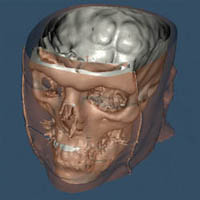Surgical Simulators
Medical simulations are used for a number of purposes. One of the most promising is the development of surgical simulators. The accepted paradigm for teaching in medicine has been "see one, do one, teach one." Although the methodology has served medicine well, there is a growing interest in the use of computer-based surgical simulators to teach complex surgical procedures. This has been prompted by the prevalence of "minimally-invasive" procedures. Minimally-invasive procedures involve the use of imaging techniques (MRI,CT, ultrasound, laparoscopes) to guide instruments through a small opening in the patient to perform certain surgical procedures.

The benefit is the reduced amountof trauma to the patient. However, the procedures have become extremely complex making effective training critical. Personnel from SEAS and SMHS have been involved in a number of research projects that involve computer scientists, electrical engineers, mechanical engineers, and physicians to develop virtual reality simulators that allow physicians to see as well as feel the simulated procedure. This type of training, although of limited use currently, has a great deal of potential in revolutionizing medicine in much the same way that flight simulators have revolutionized pilot training.
Participants: James K. Hahn, Roger Kaufman, Raymond Walsh, Thurston Carleton, Dongho Kim, Sang-Joon Lee

